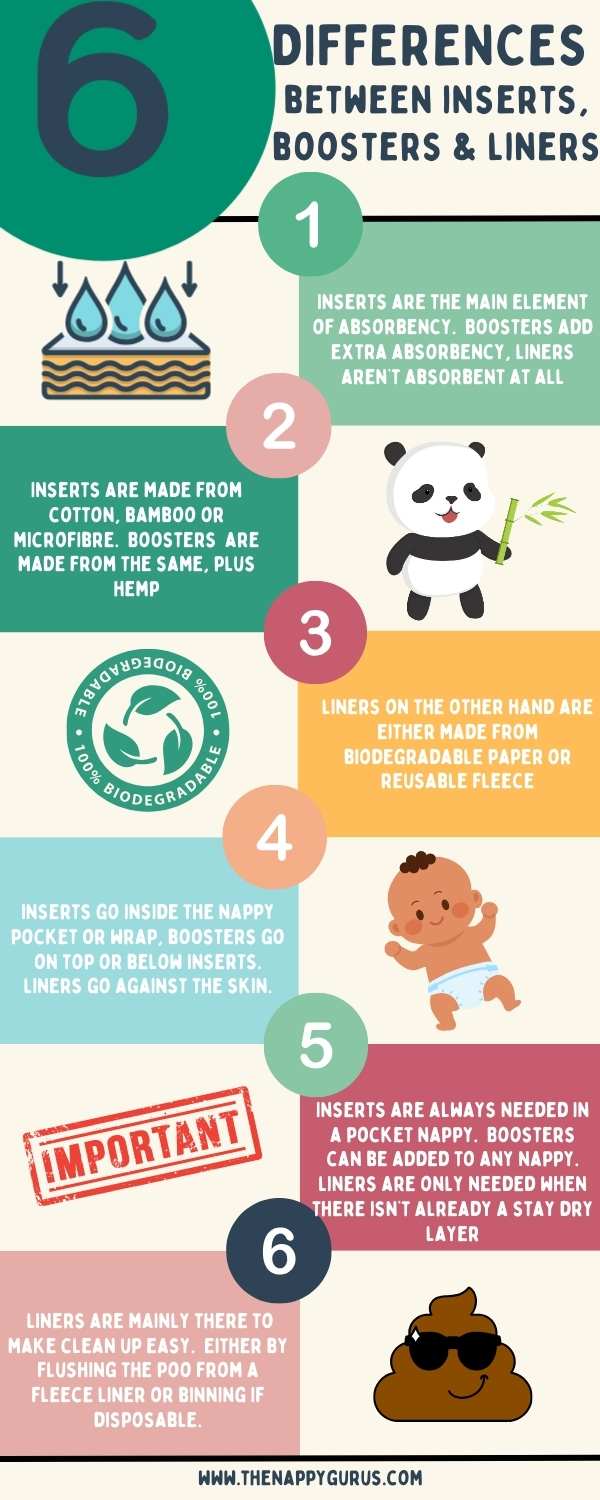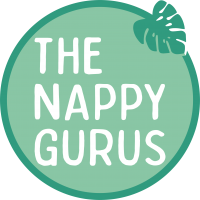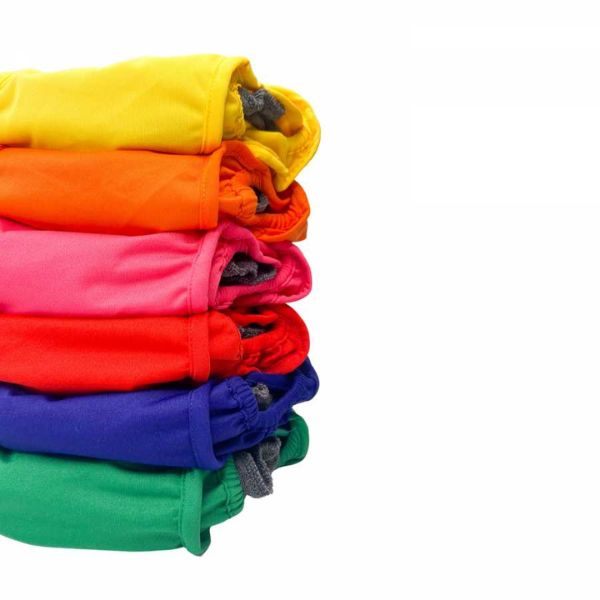What’s the Difference Between Nappy Inserts, Boosters & Liners?
Navigating the world of modern cloth nappies can feel like learning a new language.
Between inserts, boosters, and liners, understanding the function of each element is important to make sure your baby stays comfortable and leak free!
Inserts, boosters, and liners all play a role in keeping your baby comfortable, but what exactly is the difference between them? In this guide, we’ll break down each one, explain their purpose, and help you determine which ones you need for your cloth nappy routine.
What Are Nappy Inserts?
Nappy inserts is a piece of fabric made from layers of absorbent material which are used inside reusable nappies. They capture and hold urine, keeping your baby dry and preventing leaks. Most pocket nappies will come with inserts which are usually stuffed inside the pocket nappy (hence the name).
These inserts are essential for effective moisture management and come in various thicknesses and materials. They can be used alone under a wrap for newborns or stacked for overnight use in toddlers.
Nappy inserts are very similar to boosters in their appearance although they do not usually have a stay dry layer as that would be on the inner of the pocket nappy.
What Are Nappy Boosters?
Nappy boosters are generally added to an existing nappy system to boost absorbency. They come into their own when your child grows, or for overnight use you may need additional absorbency.
Boosters can be placed on top of the main insert or directly next to the baby’s skin if they include a stay-dry layer. They come in many different fabrics, from super absorbent natural fibres such as hemp boosters which are great for heavy wetters, through to the quickest absorbing booster which is microfibre.
Nappy boosters can be placed strategically within the nappy too. Little boys should be double folded at the front of the nappy for extra absorbency, whereas little girls should be folded more to the bottom and rear.
If they don't have a stay dry layer, you'll need an additional liner on top.
What Are Nappy Liners?
Nappy liners serve a different purpose from inserts and boosters. Their primary role is to make cleaning up easier.
Liners sit on top of the nappy's absorbent layers and catch solid waste, making it easy to dispose of poo and keep the nappy cleaner. Liners can be disposable or reusable, with disposable ones often made from biodegradable materials and reusable ones from fleece for a stay-dry feeling.
Here at the Nappy Gurus, we recommend reusable nappy liners made from fleece as they're softer against your babies skin and better for the environment too. They're also pretty cheap to buy and will help prevent nappy rash. Disposable liners (if flushed) can cause major sewer blockages.

Differences Between Inserts, Boosters and Liners
| Feature | Inserts | Boosters | Liners |
|---|---|---|---|
| Purpose | Main absorbency layer | Additional absorbency layer | Facilitate clean up |
| Material | Cotton, bamboo, microfiber | Same as inserts plus hemp | Fleece, biodegradable paper |
| Absorbency | High | Medium to high | None |
| Placement | Inside nappy pocket or wrap | On top of or under inserts | Topmost layer against skin |
Got more questions or need advice? Drop us a line, or check out our advice section or blogs which might be of interest:
- Types of cloth nappies
- Washing reusable nappies
- How to choose a great reusable nappy
- Cloth nappy guide
- Disposable Nappies vs Eco Nappies vs Reusables
- Best Nappies for the Environment
About the Author: Helen Rankin, an advocate for sustainable living, embarked on her journey with reusable products when her first child was born in 2004. Facing limited options in cloth nappies, Helen’s passion only grew, leading her to launch Cheeky Wipes in 2008, right before welcoming her third child.
Helen's commitment to promoting sustainable solutions led to her taking over The Nappy Gurus in 2024. Today, she is excited to share her extensive knowledge and enthusiasm for all things reusable, helping a new generation of parents navigate eco-friendly choices for their children.


